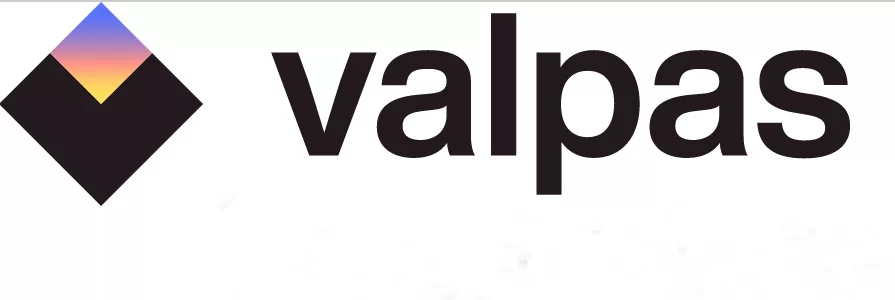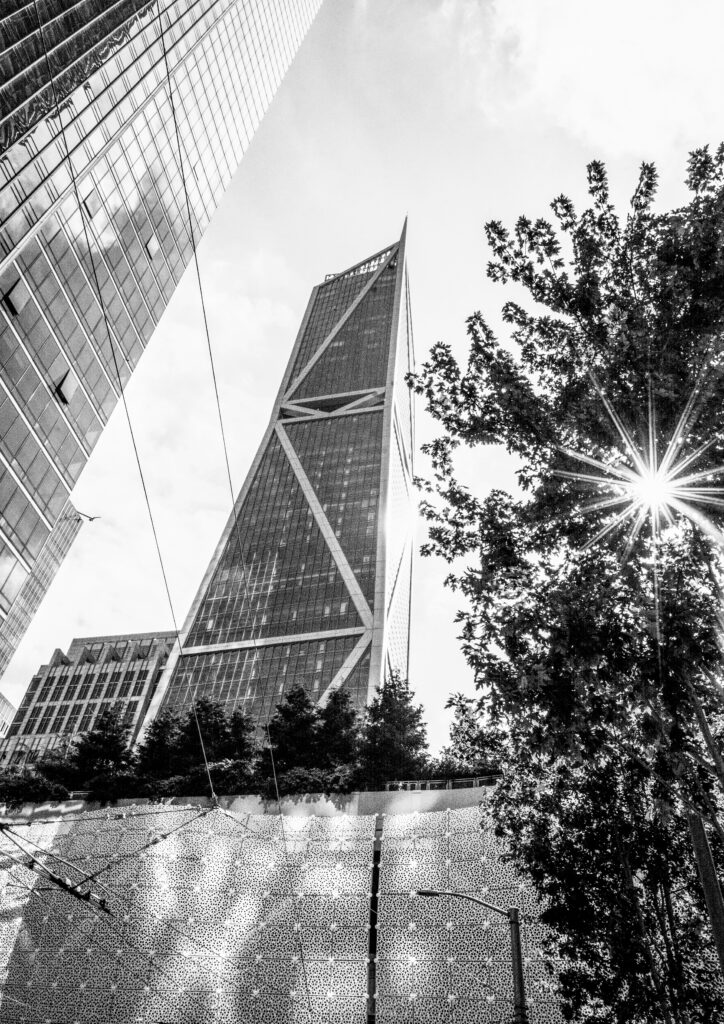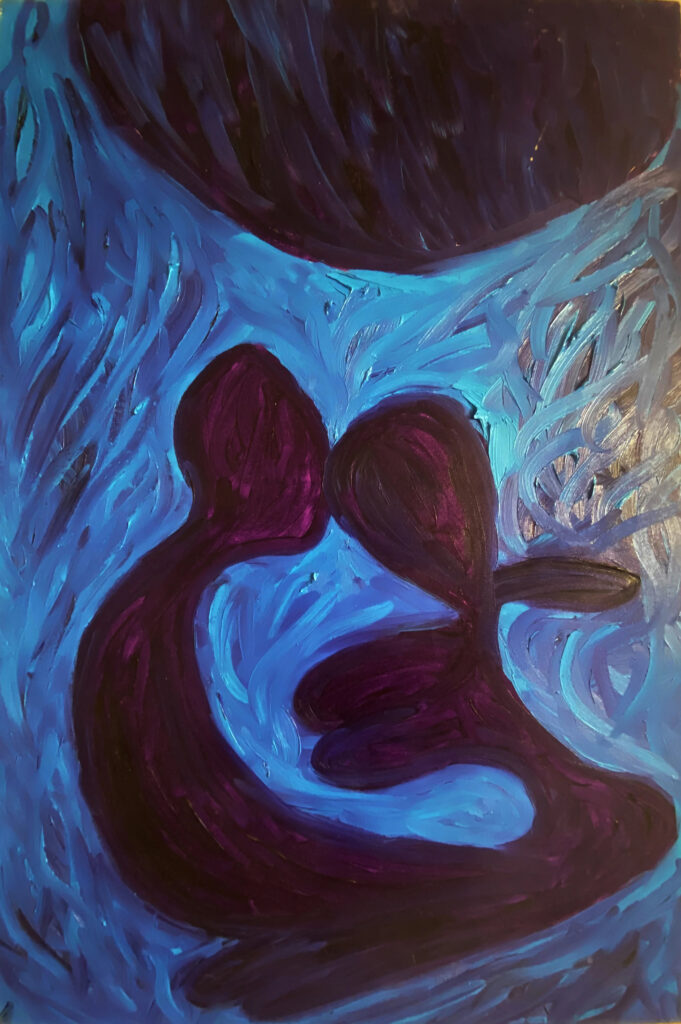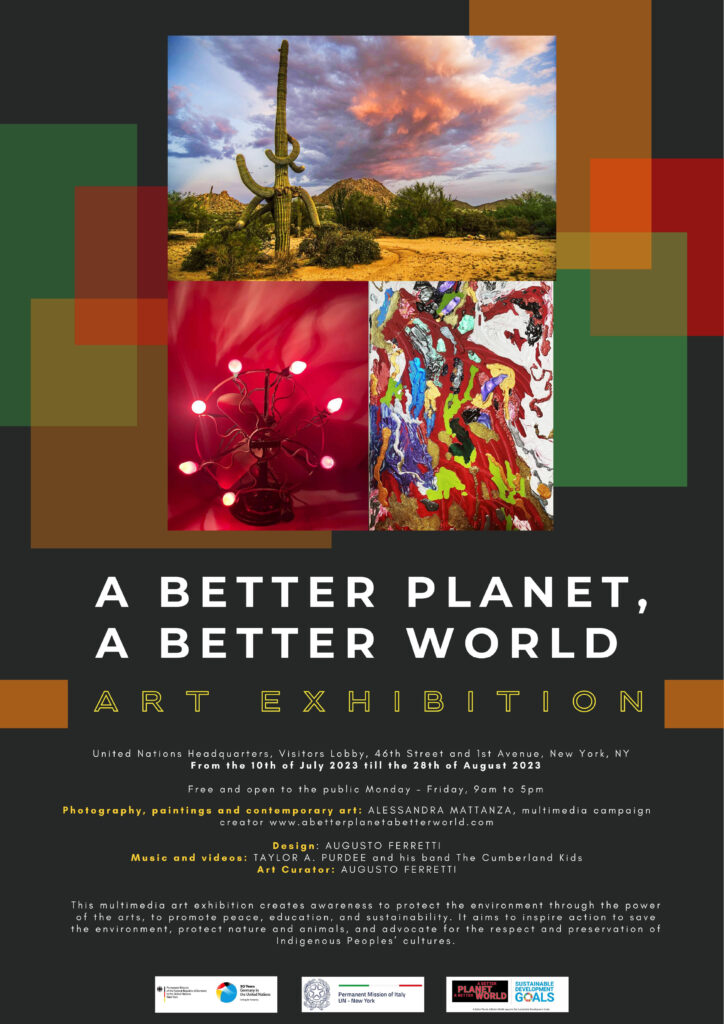INTERVIEW WITH ALESSANDRA MATTANZA
INTERVIEW WITH ALESSANDRA MATTANZA
By JAMES SINGIAN
Background and Inspiration:
What inspired you to pursue an art career, and how did you discover your passion for photography and painting?
As a kid, I was always drawing and painting, playing with colors, and playing with words later, as soon as I started to be able to write. Colors have always fascinated me, as have big photos of animals and people, portraits, and landscapes with meaning. Also, shadows and the games of light in the sky, on the walls, and the streets have fascinated me, such as the shape of figures and the eyes of people and animals.
I was a very introverted kid, an only child. I was very good at school, as I loved reading books, was very curious, and wanted to know things. However, I stuttered and was bullied because I was too shy. I could not express my feelings or feel comfortable around the other kids.
My best friends were pets such as cats, dogs, and canaries, which my uncle used to breed, and horses, which a family friend used to have. And I had been a movie buff since I was a kid. My mother, an accountant with a passion for the arts, was very liberal, and she gave me free access to all the TV and the books I wanted… My father was a very good painter, but he decided to take a job in a bank, as my parents were quite poor but very much in love and needed money.
I loved old American movies from the 60s, actors such as Audrey Hepburn in Breakfast at Tiffany’s, Robert Redford, Marlon Brando, Kim Novak in Bell, Book and Candle, Elizabeth Taylor in The Last Time I Saw Paris, Giant and Cat on a Hot Tin Roof, Jane Fonda in Sunday in New York or Barefoot in the Park, Natalie Wood in This Property Is Condemned, and Ava Gardner in The Snows of Kilimanjaro or The Sun Also Rises were in my dreams, as I was already hoping to leave the Italian countryside and go to New York, Los Angeles or, even, San Francisco. These women seemed so free, independent, wild, and so beautiful…
Growing up in a small town in the Italian countryside, these beautiful women were like heroes to me. But some of my other heroes included writers and poets such as Ernest Hemingway, Truman Capote, Tennessee Williams, John Steinbeck, Herman Hesse, Goethe, Charles Baudelaire, Arthur Rimbaud, Cechov, and Henry James. They inspired me with their stories and extraordinary lives.
My love story with the arts began with writing when I was eight to ten. It became a need, as only through words could I be myself and express myself. I was also fascinated by photography. I remember mainly taking photos of trees or nature and became a professional photographer and painter in my twenties.
In the Franciacorta area of Northern Italy, where I came from, people were mostly entrepreneurs, and making money was a priority there, so I was not taken seriously when I talked about becoming an artist or a writer. I began working as a journalist as it was the only way to earn a living writing. Eventually, I loved journalism, particularly the research and investigating process. I was not wealthy and needed to be paid for my work.
However, creating art has never been about money. Art was my life, the blood running through my veins. I could not survive without my art, even without being paid.
But I also needed a job to survive. The sacrifices I have made to do this job have been incredible, from not having much money, sometimes not enough to eat, to giving up having a child or family, as I was traveling too much to earn enough to support myself and create my art.
Growing up as a woman in the ’80s and ’90s was challenging in a male-dominated society where it was still expected that women had to give up their jobs, marry, and have kids. I was also in Italy, far from the ideal society I saw in American movies.
Artistic Process:
Can you walk me through your artistic process, from the initial concept to the finished piece?
I have always been a very passionate and romantic person. My artistic process is based on emotions and feelings and the connection to nature and human and animal souls. Emotions constantly inspire my paintings. I love knives, so I paint with knives, paper, brushes, hands, or whatever inspires me in the moment.
How do you choose your subjects for photography and painting? What draws you to a particular scene or idea?
I am inspired by everything around me and other artists or people. I have also been inspired by love many times: the love for a person I met, the love for a person I love, the love for a person I lost, the love for a person I love but who does not love me back, the love for a person who loves me back, or the love for a person who is impossible for me to have because of bad timing or simply because our destinies are driving us apart.
A movie, a book, or music has inspired me. I always paint with music, mostly jazz, which I adore, or classical music. It is very similar to jazz because you can improvise with it; every performance can be different based on the performers’ passion. There are rules, but emotions can disrupt them, and you can listen to them and never tire of it. I do not play the piano, but I have a passion similar to the love Ryan Gosling’s character has in the movie La La Land.
Sometimes, characters and music in movies and soundtracks inspire me. In the summer of 2023, when I did the big art exhibition in the main gallery open to the public inside the United Nations in New York, I created four paintings: four female totemic power figures inspired by female figures I discovered in movies and connected to the elements of nature: air, earth, fire, and water.
I created so “The Angel” for air, inspired by Meg Ryan in City of Angels; The Geisha for the Earth, inspired by Zhang Ziyi’s character from Memoirs of a Geisha movie; “The Snake” for fire, inspired by Margot Robbie’s character in Babylon; “The Mermaid” for water, inspired by Darryl Hannah’s character in Splash.
Music from these movies also inspired me to create powerful, totemic female figures from Mother Nature to be translated on a canvas to bring joy, happiness, love, prosperity, and power.
I have always been inspired by Indigenous cultures, which I studied in anthropology, and their connection to magic, nature, the esoteric, and the spiritual.
For my photography, reality fascinates me. I want my photos to be authentic, and colors are so important to me, especially the contrast of black and white and the storytelling message. What a photo conveys is more important than the technique, perfection, or perfect focus. I have been greatly inspired by Erwitt Elliott and Steve McCurry, whom I met in person and with whom I have also worked, and by Henri Cartier-Bresson and Francesca Woodman.
Medium and Technique:
What mediums and techniques do you prefer in your work, and how do they contribute to your artistic vision?
I love working with canvas and different materials. As a child, my father was an amateur painter, so I started with canvas. I believe that is why I feel very familiar with it. Recently, I have been experimenting and am fascinated by different materials, such as plastic.
I love nature and animals, and I have an exciting idea that people can “recycle” plastic by incorporating it into their art. I love to create installations with plastic, photography, and mirrors, which is another element I love to integrate into my artwork, as they reflect the soul to me and connect the world of the living people with the world of the dead. But I constantly have new ideas, so I enjoy creating a technique to paint in a specific way or to create art a certain way and then stop, but above all, to create something new. My ideas work like magic to cast a spell on my soul.
How do you balance traditional techniques with contemporary approaches in your art?
I live in the moment, so I listen to my art and instinct and avoid focusing too much on technique. Recently, I became fascinated by technology and AI and want to create art with them. At the moment, I am working with a robot to create art; it is a real collaboration with a person.
I love street art and have written many books about street artists. I’m fascinated by their bravery in venturing onto the streets at night or not fear being seen also while they paint. I’m still an introvert in this sense, and I paint or create art where no one sees me. But I have loved street art since my early twenties when I began as a street photographer. It was the surprise of color, as a flower blowing in a field or a mushroom popping up in the forest from the earth. I felt emotional, passionate, full of hope, and greatly inspired.
Ultimately, I don’t separate street art from art in museums. Both offer the same quality and value. Both can speak to my soul and heart. I have always loved street art because it is free and open to the public, making it more special. It is like a miracle of colors and emotions in the street, a protest against the system launching a powerful message for a better world.
As an activist, I have always believed in street art’s powerful message to improve things.
Influences and Style:
Who are your artistic influences, and how have they shaped your style?
My art was most influenced by Gustav Klimt, Egon Schiele, Keith Haring, Picasso, Gerard Richter, the expressionism “Blaue Reiter” movement, Sandro Botticelli, Julian Schnabel, Marc Chagall, Kandinsky, Lucio Fontana, Antonio Canova, Louise Bourgeois, Fujiko Nakaya, Jackson Pollock, C215, Banksy, Edvard Munch, Jean-Michel Basquiat, and Refik Anadol.
All these great masters of the past and the present have influenced my colors and the expression of my feelings, but many other artists, too many to name, have also influenced me.
I also want to define and create something new in my style. I represent a style and stop; then, I create a new style.
Regarding all my art, I am constantly influenced by movies and actors. As a journalist, I have interviewed many actors since I began at twenty. I know you hear many stories about eccentric celebrities. From my experience, actors and even filmmakers have always been very gracious and kind. They have always inspired me through their characters and beautiful stories, revealing their genuineness as humans and their artistic sensibilities.
Some of them, and out of respect, I will not mention names for self-promotion, have also told me that my art, photography, paintings, or books were beautiful and encouraged me to create more art, fearlessly follow my dreams, and never give up.
How would you describe your artistic style, and how has it evolved over time?
I prefer that other people describe my style. It is challenging to describe my style, as I work with different media and forms such as writing, photography, paintings, installations, and recently, sculptures and digital art. I create jewelry with energy-rich stones and crystals, such as totemic necklaces, bracelets, or totems. I also create totems with dried flowers and roses. I could call it “multimedia evolutionism,” but I am posing the question: What can those who see all my artwork call my art?
I love confronting people, hearing their thoughts, and involving them in my art. That is why I also created, in 2022, at the KUNSTLABOR 2 Museum in Munich, part of my art project www.newyorkblackandwhite.org, the installation “The Social Justice Room,” where people write on Post-it notes what they think about racism, social justice, diversity, and equality. It was an unexpected success. As of 2024, we have over 350,000 Post-it notes.
Challenges and Rewards:
What challenges do you face as an artist, and how do you overcome them?
As an artist, fear and anxiety have always been challenges for me. Even if I might look very open and friendly, my real nature is introverted. So, I was scared to show my art publicly for many years. I am still out of social media, having my own websites’ content. I am very grateful my art exhibitions were a big success, as I did not expect them and was already grateful I could do them.
I became fearless, as I decided – during the pandemic when we were uncertain if we were indeed all going to die – that I had to do it, not for myself, but for the mission, I feel my art has.
Initially, I created my art only to express my feelings or for pure love. But then, during that time, I had time to stop and think, and I realized my life had to have a greater purpose. I became more passionate about the causes I believed in: antiracism, as I was a victim of racism; social justice, as I have also studied law for my journalism work; and I have a strong sense of justice and firmly believe that we must protect minorities and people in need and that we must fight injustices for a better world; diversity and equality; and women’s rights. But every human right and the protection of nature and the animals, which I have deeply loved since I was a child, and the protection of the Indigenous Cultures, who I believe are the deepest souls of the universe.
When I was offered to do an art exhibition, I did not have much time to think, and I continued with my team’s help. I have a wonderful team; we love each other and are also friends. I believe in treating everyone with kindness and to fight injustices. As I am self-made, I value others who are self-made.
What moments or aspects of your artistic journey bring you the most satisfaction or joy?
When I can give others joy and happiness and know my art has a mission, I can bring value to a better world. I have created campaigns without my name prominently on them but with a logo and brand for the cause as www.newyorkblackandwhite.org and www.abetterplanetabetterworld.com
Projects and Exhibitions:
Can you discuss any specific projects or series that are particularly meaningful to you?
I will always be very grateful to Stephanie Utz, the co-founder of the MUCA Museum—by the way, one of the few museums in the world to start promoting street art as contemporary art with artwork by Banksy, Shepard Fairey, JR, Os Gemeos, and other great artists—for allowing me to do a big art exhibition for my project, www.newyorkblackandwhite.org, in KUNSTLABOR 2 Museum and Cultural Center, in 2022.
Also, I want to thank the United Nations for choosing my art exhibition, “A Better Planet, A Better World,” part of the project www.abetterplanetabetterworld.com, for their main art gallery inside the headquarters in New York. We had over 200,000 people daily or more, and I was so blessed to show my artwork to people worldwide. Also, the United Nations exhibition team was excellent.
I want to thank the prima ballerina and choreographer Analia Farfan, who founded the International American Ballet, for believing in my art and creating the ballet “A Better Planet, A Better World” with me, inspired by my art exhibition at the UN in New York. Its premiere in New York, on the 6th of April 2024, at the St. Jean’s Theater on the Upper East Side was sold out and a big success.
Both art exhibitions and the ballet above are also touring the world. So, the next art exhibitions in 2024 will be “A Better Planet, A Better World,” with even more art at the KUNSTLABOR 2 in Munich, Germany, from April 13th to April 28th 2024 and, “A Better Planet, A Better World” at the INNOVIT – Italian Innovation and Culture Hub, with the Italian Cultural Institute and the Italian Consulate in San Francisco, USA, from May 30th to September 1 2024. I will have another big art exhibition, “Street Art is Female,” at the UN Headquarters, in New York, about women’s rights, in October-November 2024. In the coming years, other art exhibitions will be held in Portugal, Paris, Helsinki, Norway, Australia, Mexico, and the USA.
How do you approach preparing for exhibitions, and what message or emotions do you hope viewers take away from your work?
My art exhibitions have always had a higher and more powerful message. I want to inspire people to make the world a better place.
Audience Engagement:
How do you engage with your online and offline audience or community?
The best way to engage with me is in person. I am shy about exposing my art and myself on social media, especially myself. I prefer my art to “speak” for me, and my missions and campaigns speak for me. If you want to partner with us, feel free to contact me.
Do you consider the audience's interpretation of your work, or do you prefer to leave it open to individual perspectives?
I prefer to leave the interpretation of my art to individual perspectives. I love that people look at my art and identify with it. I have a concept as a base in the creation process. However, I have also studied Freud and Jung at the University Ca’ Foscari in Venice, in addition to history, philosophy, and art. Our subconscious sometimes emerges in ways we do not even realize. This is even stronger when we create art.
Career and Future Plans:
How do you balance the business side of being an artist with your creative process?
In this sense, I am still very naïve, and I think I will leave the business part to my managers and agents in the future so I can focus only on art, ideas, the creative process, and my activism campaigns. I have never created art for money, and I do not like assignments so much. I create my art freely and wildly, so I have not found the right balance. I have struggled to separate myself from my art for a long time, as it was also part of me. I was afraid to reveal my emotions, like a stray animal approached by a stranger.
But if I know that my art promotes a cause and serves a better purpose, I will overcome the fear.
What are your future goals and aspirations as an artist?
I want to create big art installations inside and outside. I would also like to work with AI and digital art, continue creating traditional art, paint, take photos with my camera, and write. I want to write my own words and not hand this over to AI. However, I would like to collaborate with AI, as I sometimes feel that AI can be much like people and have some empathy. I met many robots in Silicon Valley and other places; some seem to have real feelings. They are also curious to know more and learn more. It may sound crazy, but it is my personal experience, and I do not want to influence anybody.
Advice for Aspiring Artists:
What advice do you have for emerging photographers and painters just starting their artistic journey?
Never give up. You need talent, of course, but it is not enough. Reliance, resistance, devotion, and sacrifice are also necessary for me to make it. But I rely first on success in life and my career to be a good and kind person. If I know I can be a better person every day, that defines success for me. I also love and let others, people or animals, love me. I strongly believe in love in all its forms.
In the past, I have already lost my boyfriend and mother. I had some money and, indeed, some success, but I would have given all up to have them back in my life.
Are there any lessons or insights you wish you had known when starting?
Very often, I thought I had to do it all by myself. Having a great agent or manager to help me organize my work is a blessing, especially if you choose the right person who believes in you and your art and understands it. Not somebody approaching you only as you have become famous and they think they can start making money from you. Also, real friends are very important to me. I learned to accept their help. They are my extended and also, sometimes, dysfunctional family, as many of my friends, including me, are a bit eccentric and crazy, but most importantly, we love each other a lot, and united, we are strong.










